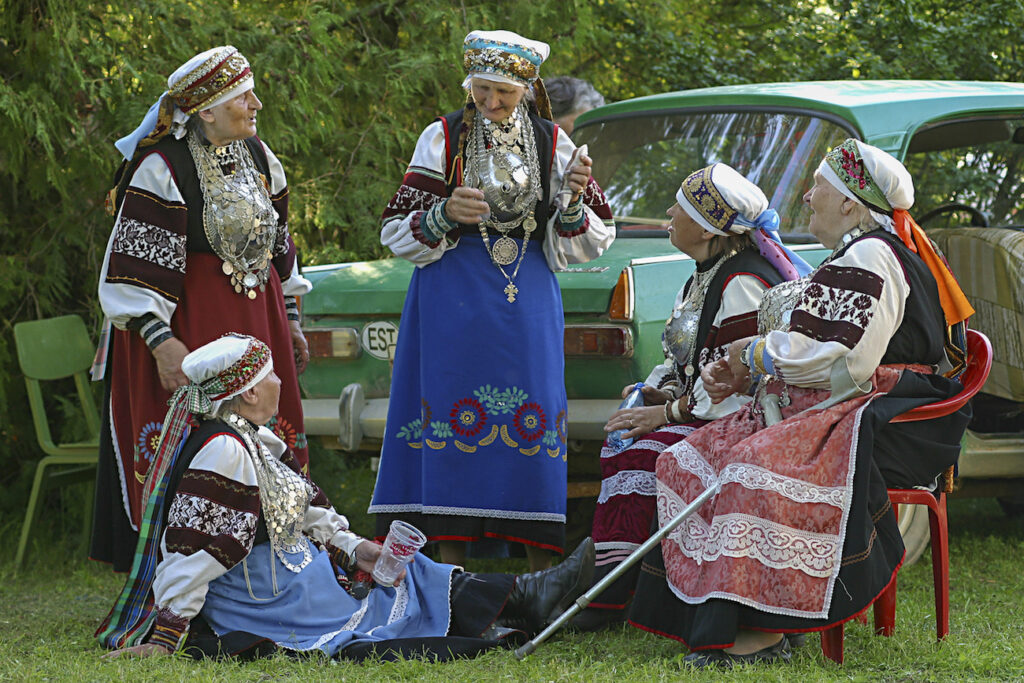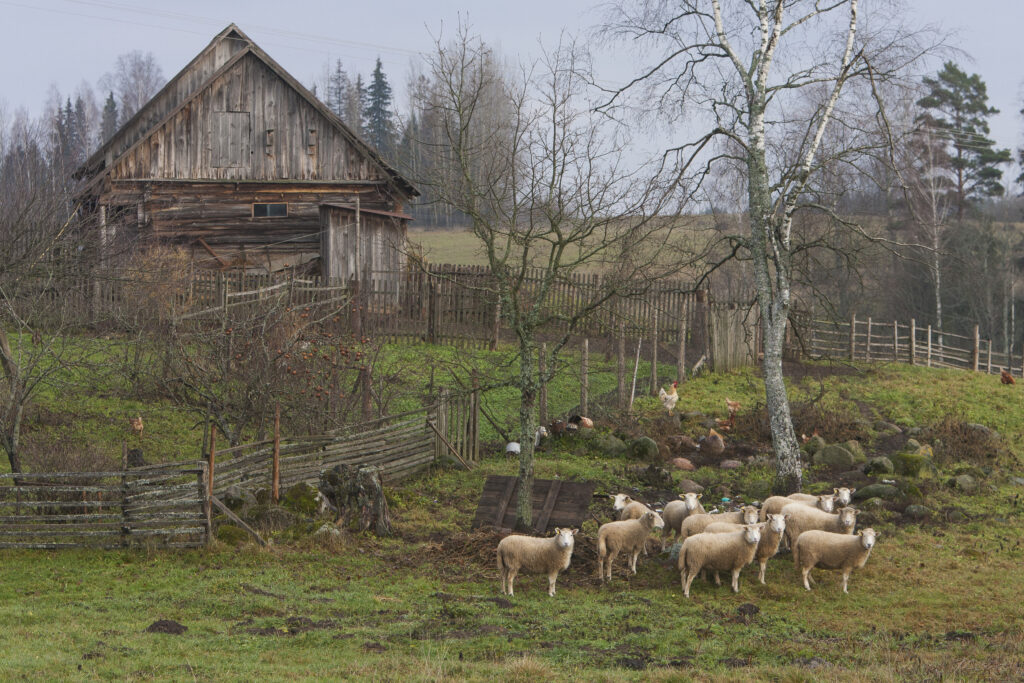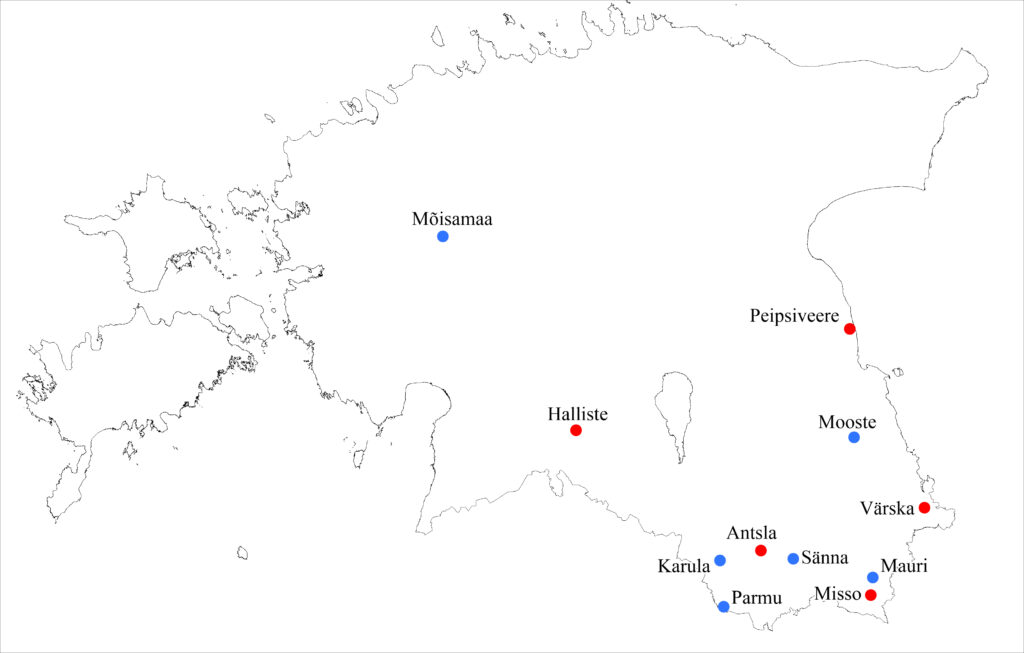What are the advantages and pull factors of rural areas?
Similarly to the rest of Europe, Estonia has seen a decline in rural population and suffered setbacks in traditional economy. Changes in population as well as employment numbers gained momentum particularly in the 1990s. Although there has been no shortage of proposals, a working solution to the rural problems is yet to be found. However, values have begun to change all around the world — cities are no longer seen as the single best option and urbanisation as the main key to progressive solutions. In what follows, I will consider the competitive advantages of rural areas as an opportunity for the development of rural communities, which would in turn lead to a wider transformation of societal values.
Changing values
The formation of new rural communities requires not only thoroughly pragmatic factors such as job opportunities or the availability of social infrastructure, but first and foremost social readiness in the form of effective personal freedoms, private property and security in the broader sense. Thus, in post-socialist countries such as Estonia, the conditions for the birth of new communities emerged only in the last quarter-century. Considering the pace of social transformation, human adaptation and opening of the real estate market, the relevant period has been even shorter. Nevertheless, significant positive changes have taken place over the last ten years, and the inherently Estonian longing for personal land has helped to invigorate also peripheral regions. We have studied the revitalisation of rural areas through valuing and promoting built heritage,1 and through the formation of new communities. In such scenarios, both individual and communal decisions play an important role.
In the last couple of decades, values have begun to change. Rural development strategies of governments as well as international development agencies have adopted the principles of decentralisation, collaborative management and community-based development.2 In addition to cooperation with the public sector, these approaches rely on community services and other forms of not-for-profit services.3;4 Active and involved communities form an important precondition and success factor for decentralisation, while also being part of the United Nations sustainable development goals.5
Community is increasingly defined in terms of place cognition or place attachment,6 by describing the bond between an individual and some personally meaningful environment.7 This bond is growing ever more important as globalisation and potential environmental problems endanger the places and connections that people deem significant. Thus, the emergence of new communities or new ways of life in rural areas can be interpreted as a way of confronting the modern capitalist society — that is, by withdrawing from urbanised or consumption-based environments. Relocating to the countryside is generally perceived as a positive development — in the case of new communities, it is an important way of transforming one’s communal and civic life and finding one’s identity. More generally, it presents a potential solution for enhancing the viability of the local level.
Rural idyll and comforts of the countryside
In general, rural communities are not temporally limited; they do not have a temporary nature — this differentiates them from other, largely postmodernist, urban and ephemeral cultural phenomena like various subcultures. This distinctive feature of rural communities is due to their fixed identity, internal cohesion and networking, but also the material responsibility that comes with acquiring real estate. Newcomers to rural areas often adhere to certain fixed principles fitted for sustainable living.
The conception of ecovillages took shape in reaction to the environmental issues that gained prominence in the late 20th century. Ecovillages apply a model of sustainable community that expands the concept of community and the related ethical categories,8 and which is also a part of the post-productivist view of rural areas.9;10;11 According to this view, one of the resources that rural areas have plenty of is idyll — it evokes a sense that the economic and social conditions of rural areas develop in different directions and thereby favour versatile and autonomous ways of life. In combination with the existent landscape and natural resources, such idyllic components could be called rural, environmental or landscape amenities.12
Studies have found that the biggest winner from rural relocation has so far been Southeastern Estonia, even though the region is still widely regarded as a periphery, and positive news from these parts are rather scarce. Nevertheless, the joint effect of rural, environmental or landscape amenities can be considered an important factor in facilitating relocation to the countryside as well as bringing forth new communities. Such amenities can be viewed as a competitive advantage for rural areas, alleviating people’s yearning for long-standing values, while also being interpretable as something fresh and new.
Possibilities in Estonia
New rural communities consist of individuals and groups who share common interests and goals and who will blend with the traditional communities if possible. The latter process is likely to be more straightforward and swift on the individual level. Generally, it depends on the local leader or organiser, but also the cooperative capabilities of the community and municipal government.
In the case of Estonia, relocating to a rural area, choosing a summerhouse and forming new communities are all substantially affected by the type of dwelling, location and surrounding settlement patterns, all of which largely dictate the lifestyle of the person. In the countryside, the availability of proper amenities is appreciated, but so is environmental awareness and the need to keep and maintain the local landscapes, architecture and traditions. Local employment and educational opportunities do not play a crucial role in the decision process. Moving to the countryside is usually planned over a long time with careful consideration, and jobs are often either created or brought along. Notably, new communities strive to create alternative educational opportunities for children, which is something that resonates with the ideas of harmonious environment and safe child-rearing mentioned by Powell et al.13 Ideally, relocating to a rural area would warrant families an income from some agreeable job. Other significant factors in moving to the countryside are cheaper real estate prices as well as a certain flexibility of legal regulations and simplicity of arranging the everyday life (including economic activities).
Ideal and sustainable settlement patterns and residential preferences are prominent objects of study in the academic works of population scientists and spatial researchers. The preferred settlement pattern both in Estonia and the broader Nordic region is rural or dispersed settlement, which largely coincides with the ideal model of the current new communities. Dispersed settlement is generally the main spatial concept behind newly-created villages, which helps to preserve traditional kinds of settlement and architecture, and also to understand and explain traditional landscapes.

Idealists or realists?
Not all the rural incomers can be understood in environmentalist terms. Kanter14 lists different causal origins of regular intentional communities in the United States, such as religious motives, desire for political or economic reform and need for self-actualisation. The common denominator for all of these motives has always been a certain yearning for self-sufficiency, independence from external influence and economic autonomy.
Schmied15 distinguishes five types of migration to rural areas: middle-class quality-of-life migration, low-income migration, life-cycle migration (i.e., return of seniors), labour migration and countercultural migration (i.e., influx of various subcultures to the countryside). The latter group of arrivals includes tree-hugging admirers of a picturesque lifestyle as well as those who are involved in the evolving organic culture. In what follows, I will briefly examine some of the study results that concern mainly new communities.
Contemporary Estonian rural communities are primarily characterised by a certain desire for self-sufficiency, independence from external influence and economic autonomy. Thus, the communities in Estonia should not be seen as groups of so-called green extremists, but rather as groups governed by a clear goal, cooperation skills and willingness to contribute to reducing the ecological footprint. This could be expressed in an environment-friendly mentality, preservation of traditional architecture and culture, or efforts to raise children away from the influence of the city. On the other hand, many communities are clearly driven by economic motives. This could be expressed in their involvement in traditional agriculture, but also in manufacturing enterprises with precisely measurable benefits to the local economy. New communities generally do not rely on the local labour market; newcomers tend to bring along their own jobs or create new jobs based on their field of interest. Well-educated newcomers to the countryside have also found employment in the public sector, e.g., by alleviating the shortage of teachers in a local school, or enriching the local cultural life.
Middle-class quality-of-life migration and formation of new communities share several common features. Both are generally characterised by well-educated participants with clear goals. At the same time, there is an important difference with respect to the age of the rural incomers. In general, community-based models tend to hold for younger generations. Communities might also include some middle-class people who are well advanced in their careers, but most members are younger people in the early stages of their work and family life, united by some or other common interest. It is also important to note, however, that according to our studies, middle-class quality-of-life migration is often sparked by a search for a summerhouse or desire to return to the place of one’s origin. On the community level, these causes can be described in a more supraregional way, with ‘place of origin’ not designating any particular location, but rather the Estonian rural culture in a more general sense.
A development opportunity for municipalities
In order to invigorate regions beyond population centres, local development strategies need to describe place-specific possibilities and solutions. However, describing a place and its particular advantages is a very long-term process. Studies have shown that successful examples can stem from fortunate coincidences (e.g., Parmu Ecovillage, Small Footprint and Karula) as well as a lot of skilful work (e.g., Mooste). Often, the main influencer is a local activist or leader and a strong sense of place. The most attractive regions to newcomers are those distinguished by a clear cultural background or outstanding scenery, but also those where the local municipality has made an effort to create new jobs and develop networks. The decision to relocate is further shaped by positive examples, determined political will and economic opportunities. To that, we can add also those elements of rural idyll that differ from place to place and person to person.

ANDRES RÕIGAS (MSc in geography) is a research fellow at the University of Tartu Viljandi Culture Academy. He has studied post-socialist economic spaces by examining the birth and development of entrepreneurship, effects of entrepreneurship education and settlement in rural areas.
HEADER photo by Ingmar Muusikus
PUBLISHED: Maja 99 (winter 2020) Rural Insights
1 Rõigas A., Rennu, M., Maapiirkondade elavdamine: ehituspä rand ja turundustegevus Lõuna-Eesti näitel. – Studia Vernacula (Esemete elulood),(9), 2018.
2 Speer, J., Participatory governance reform: a good strategy for increasing government responsiveness and improving public services? – World Development 40 (12), 2012.
3 Bennett, J., Iossa, E., Contracting out public service provision to not-for-profit firms. –Oxford Economic Paper, 62 (4), 2010.
4 Hulme, D., Edwards, M., NGOs, states and donors: too close for comfort? – NGOs, States and Donors: an Overview. St. Martin’s Press, New York, 1997.
5 Bergh, S., Democratic decentralisation and local participation: a review of recent research. – Development in Practice, 14 (6), 2004.
6 Scannell, L., Gifford, R., The relations between natural and civic place attachment and pro-environmental behavior. – Journal of Environmental Psychology, 30 (3), 2010.
7 Giuliani, M. V., Theory of attachment and place attachment. – Psychological theories for environmental issues,Aldershot: Ashgate, 2003.
8 van Schyndel Kasper, D., Redefining Community in the Ecovillage Debbie. – Research in Human Ecology, 15, (1), 2008.
9 Halfacree, K. H. Rural space: constructing a three-fold architecture. – Handbook of rural studies, London: Sage, 2006.
10 Halfacree, K. H., Trial by space for a ‘radical rural’: introduction alternative localities, representations and lives. – Journal of Rural Studies, 23 (2), 2007.
11 Ilbery, B. Bowler, I., From agricultural productivism to post-productivism. – The geography of rural change. (Harlow: Longman), 1998.
12 Waltert, F., Schläpfer, F., Landscape amenities and local development: A review of migration, regional economic and hedonic pricing studies. – Ecological Economics 70, 2010.
13 Powell, M. A., Taylor, N., Smith, A. B., Constructions of rural childhood: challenging dominant perspectives. – Childrens´s Geographies, 11(1), 2013.
14 Kanter, R. M., Commitment and Community: Communes and Utopias in Sociological Perspective. Cambridge: Harvard University Press, 1972.
15 Schmied, D., Incomers and Locals in the European Countryside. – Winning and Losing. The Changing Geography of Europe’s Rural Areas. Aldershot, Burlington: Ashgate, 2005.







